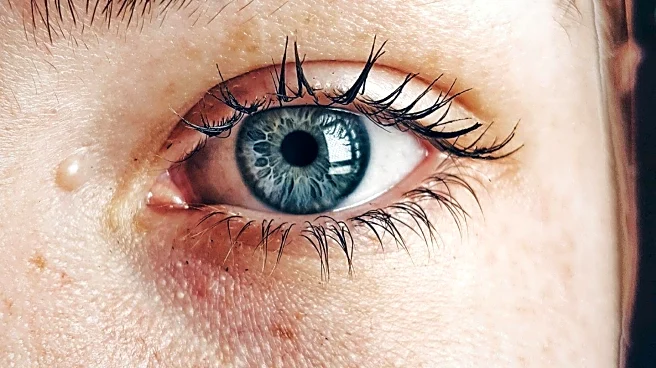What's Happening?
A recent study has investigated the effects of retinal laser photocoagulation on the vascular density of the retina and choriocapillaris in patients with diabetic retinopathy. Utilizing swept-source optical coherence tomography angiography (SS-OCTA), researchers conducted a prospective observational study involving 45 eyes from 45 patients, including those with severe nonproliferative and proliferative diabetic retinopathy. The study measured vessel densities in the superficial capillary plexus, deep capillary plexus, and choriocapillaris at various intervals: before treatment, and at 1 hour, 1 week, and 1 month post-treatment. Results indicated a significant decrease in choriocapillaris vascular density immediately after laser treatment, with partial recovery over time, though levels remained below baseline after one month.
Why It's Important?
This study provides critical insights into the physiological changes induced by laser photocoagulation, a common treatment for diabetic retinopathy. Understanding these changes is vital for optimizing treatment protocols and improving patient outcomes. The findings highlight the need for careful monitoring of vascular density post-treatment, as the long-term effects on retinal health could influence future therapeutic strategies. This research could lead to advancements in personalized medicine, ensuring treatments are tailored to individual patient needs, potentially reducing complications associated with diabetic retinopathy.
What's Next?
Further research is needed to explore the long-term implications of these vascular changes and to develop strategies that mitigate any adverse effects. Researchers may focus on refining laser photocoagulation techniques or combining them with other treatments to enhance recovery of vascular density. Additionally, clinical trials could be conducted to assess the efficacy of alternative therapies that preserve vascular health while treating diabetic retinopathy.
Beyond the Headlines
The study underscores the importance of technological advancements in medical imaging, such as SS-OCTA, which allow for detailed analysis of microvascular changes. This could pave the way for more precise diagnostic tools and interventions in ophthalmology, potentially benefiting a broader range of conditions beyond diabetic retinopathy.










